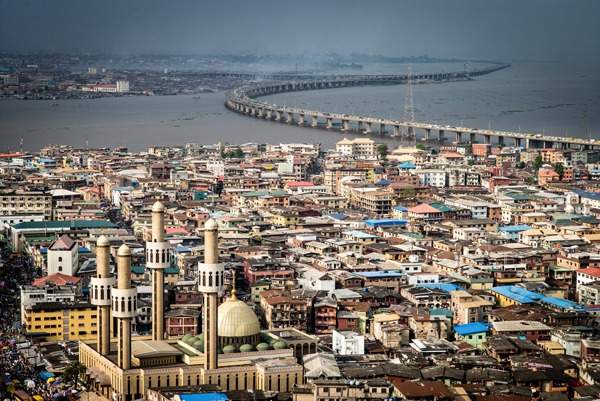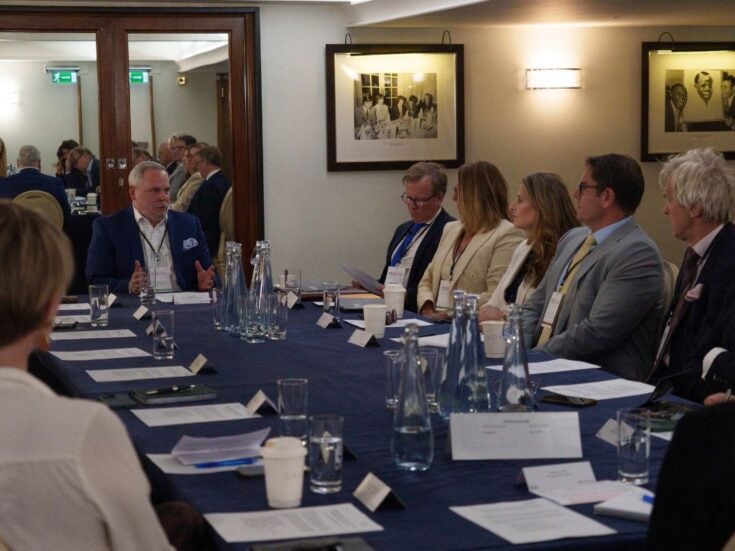
As Chinese growth decelerates and Western economies slow to a crawl, investors of all stripes are asking the same question: Where will growth come from? Edwin Smith discovers that Africa could be the answer
A large part of the challenge facing the world economy – particularly in the West, but also in China and Japan – is the spectre of ageing populations. They threaten the balance between profit-making, tax-paying workers on the one hand, and public service-reliant pensioners on the other. However, there is one part of the world where things couldn’t be much more different.
Africa is the only region of the world where the number of people under the age of 25 is increasing; they already account for 60 per cent of the continent’s 1.3 billion people. By 2036, the working-age population of the continent will exceed each of India and China’s, according to research by the Institute for Securities Study and International Futures. By 2050 the population of Africa is expected to grow to 2.5 billion people and, from there, on to 4.2 billion by the end of the century, according to the Pew Research Center. As a result, many of Africa’s growing urban hubs are expected to evolve into megacities.
By 2100, Lagos, Kinshasa and Dar Es Salaam will be the three largest cities in the world, according to the Global Cities institute, with populations of 88 million, 84 million and 74 million, respectively. Economies are expected to boom too, as more and more people move out of low-productivity employment in agriculture to other sectors. The economy of Africa, worth $2.6 trillion today, is projected to swell to $29 trillion by 2050.
The scale of opportunity – for investors, businesses, entrepreneurs and individuals – is clear. But there are hurdles to overcome. Several of Africa’s largest economies are heavily reliant on natural resources; Angola and Nigeria have suffered torrid economic times due to fluctuating oil prices. Many countries – even the continent’s richest – struggle to build or maintain the infrastructure necessary for a vibrant private sector. Sustainable, long-term growth will hinge on whether nations are able to change this, and untether them-selves from volatility in commodity prices.
A recent World Bank report concluded that a burgeoning digital economy was the key to unlocking ‘inclusive growth, innovation, job creation, service delivery, and poverty reduction.’
If Africa is to segue smoothly into the digital age, then companies such as Andela are likely to play an important role. The business employs software developers in six African countries who work remotely and from Andela offices for companies all over the world, including the BBC and GitHub. Having closed a $100 million funding round in 2019, to add to a previous $40 million round and support from the Chan Zuckerburg Initiative, the company is eyeing expansion. ‘We’re still just scratching the surface,’ says Omowale David-Ashiru, Andela’s country director for Nigeria.

The company’s growth is undoubtedly good news for the African countries in which it operates; the skilled jobs it provides contribute to GDP and boost human capital. How-ever, there may be limits to what an operation headquartered in New York can do. ‘Certain solutions are more likely to be indigenous,’ says John Ashbourne, a senior emerging markets economist at Capital Economics who focuses on sub-Saharan Africa. ‘African companies know better how to fill niches and how to directly supply certain services.’
One such example is the Lagos startup LifeBank, which delivers time-critical supplies of blood and oxygen through potholed streets and gridlocked traffic. The company was founded by the US-educated Nigerian Temie Giwa-Tubosun and was the recipient of the top award from Alibaba founder Jack Ma’s Africa Netpreneur prize. However, building the business in Lagos has not been easy.
The company is on its third internet provider in two years. ‘Companies promise the earth and then cannot deliver,’ says Giwa-Tubosun, adding that service is patchy. ‘It’s really difficult for us to innovate around it.’ Even if LifeBank could itself guarantee good-quality internet service, its users cannot. ‘If they can’t reach us, then someone’s going to die,’ she says. As a result, the company operates a telephone call centre around the clock.
Other African nations have prioritised improved connectivity, but have not always found it easy to deliver. Rwanda’s government laid the ‘backbone’ of a fibre network across the country and expected private companies to add the ‘last mile’, but was disappointed. In 2015 it eventually formed a joint venture to complete the network with Korea Telecom. Today, 33 per cent of the population of the East African Community (covering six countries including Rwanda) has a connected smartphone, a figure that is expected to double by 2025, according to GSMA Intelligence, a data analyst.
Smartphones have already played a major role in boosting African nations’ payments and banking infrastructure, giving previously ‘unbanked’ people the ability to transfer money, make online purchases, save and borrow efficiently. The mobile money service M-Pesa, which was launched in Kenya and Tanzania in 2007, continues to evolve.
In Tanzania, the mobile network operator Vodacom (one of the networks behind M-Pesa) helps to process payments that total around 30 per cent of the country’s GDP and the company aims to bring ‘financial inclusion’ to 100 per cent of the population, says its CEO Hisham Hendi. It is equip-ping merchants with the devices for processing payments and has agreed a partnership with Mastercard to generate virtual credit cards for online purchases. It is also expanding its network of banking kiosks, has launched a micro-financing service and is working with networks in neighbouring countries, such as MTN in Uganda, to facilitate cross-border payments.
Rising tide
In 2011 the Economist published a cover story entitled ‘Africa Rising’ in which it heralded the dawn of a golden age of prosperity and development. As that narrative caught on, billions of dollars began to flow into private equity funds; the Carlyle Group raised $700 million for its first African private equity fund – 40 per cent above its target.
But there was a problem: the money raised by large PE houses did not match the ‘opportunity set’ in Africa, says Adesuwa Okunbo Rhodes, founder of Aruwa Capital Management. Few African business were prepared to ‘absorb’ the $50-100 million cheques that the large funds wanted to write, she notes. The lack of M&A activity and capital markets infrastructure in Africa also meant that there was scant opportunity to engineer successful exits.
The upturn in Africa’s fortunes heralded in 2011 has not yet been realised. Growth in the continent has been sluggish in recent years and fell to as low as 2.1 per cent in 2016, largely due to a combination of commodity price fluctuation and political instability. ‘People are realising that, actually, we can’t just replicate the model that we’ve seen in other markets,’ says Okunbo Rhodes.
Aruwa aims to make investments of between $1 million and $5 million – part of the market it believes is currently under served. The company estimates that there is a $42 billion ‘growth capital demand gap’ in Nigeria and Ghana alone. It is doing its best to fill it by investing in companies such as Wemy Industries, a Nigerian maker of personal hygiene products such as sanitary pads and nappies, that has been growing since the late 1970s, but ‘hit a wall’ when it went in search of capital to fund its next stage of growth.
Nappy valley
According to Okunbo Rhodes, the company is the ‘only indigenous manufacturer of diapers in the entire country’ – a market in which a baby is born once every five seconds, more often than Western Europe. This, along with growing urbanisation, made investment ‘a no-brainer,’ says Okumbo Rhodes. ‘People have caught on to the fact that yes, Africa is rising, but it’s not a short-term play. Over the next 50 years, this is where you should be putting your money. Because this is the most rapidly urbanising continent in the world.’
Urbanisation usually means economic growth and higher living standards. However, this is not always the case in Africa. A 2007 study in the journal Population and Development Review found that ‘Africa’s urbanization process has not been associated with falling overall poverty.’ largely down to infrastructure, especially transport.
Take Lagos, explains John Ashbourne of Capital Economics. No one knows how big the city really is – estimates range from 13 million to more than 20 million people – but the traffic is so bad that people are only really able to access an area of about 800,000 people. ‘That reduces the economies of scale and other benefits,’ he cautions.
Trade barriers
Some cities, such as Addis Ababa in Ethiopia and Abidjan in Ivory Coast ‘are really trying to throw the kitchen sink at this and get investment into public transport,’ says Ashbourne. ‘But it will take a long time.’ Part of the difficulty is that transport infrastructure either needs to be built before a city gets too big (as in London in the Victorian era) or, Ashbourne says, ‘you have a government like in China, where you have the money and the political system that allows you to build right in the middle of cities. Most African governments don’t have either of those things.’
Funding is certainly a problem for transport infrastructure across the continent. Some large projects have been financed and built by Chinese entities, although it has been suggested that African countries would have got a better deal – and minimised their already unwieldy debt burden – by negotiating as a bloc.
There were positive signs for intra-regional co-operation in 2019 when the African Union launched the operational phase of the Africa Continental Free Trade Area (AfCFTA). Once up and running, it is hoped that the free trade agreement will cover 54 countries and boost the continent’s remarkably low rate of intra-regional trade, which currently stands at around 17 per cent of Africa’s exports. (The equivalent figures for Asia is 69 per cent.)
AfCFTA could also ‘stimulate more cross-border investment’ from African companies and wealthy individuals, noted Sebastian Halle-Smith of wealth management firm Dolfin in a recent assessment of investment trends on the continent. ‘Some individuals are looking to take advantage of lower barriers to cross-border activity by diversifying their holdings away from their home country.’
What’s more, the continent’s wealth is predicted to grow by 9.5 per cent between 2018 and 2023, according to a report by Boston Consulting Group, with investible assets growing even faster than uninvestible ones. GDP growth will pick up to more than 4 per cent in 2020, according to the African Development Bank.
But wherever potential investors are based, one thing remains the same, says Adam Hunt of Standard Bank, the African focused banking group headquartered in Johannesburg. ‘Africa is complex. It is a very large continent of multiple countries – and each one has to be dealt with differently,’ says Hunt. ‘I do think it represents a huge opportunity. But Africa needs is to be looked at with respect.’
This piece is from the latest edition of Spear’s magazine, out now. Click here to buy and subscribe
Main image credit: Michael Kraus / EyeEm
Read more
It’s time to invest in an African future – inside the latest issue of Spear’s
Why the future of the global economy is African










